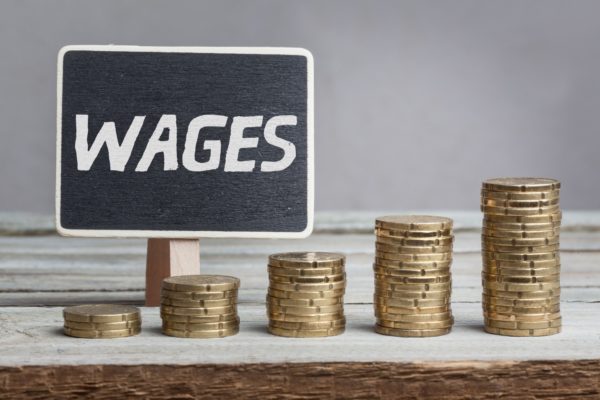The August jobs report shows the economy continues to grow, the job picture is rosy and wages are rising as employers compete for workers. The result is that wages grew 2.9 percent in August, which in turn pushed the Consumer Price Index up by the same percentage.
The Wall Street Journal reports that a robust economy has employers scrambling to fill positions and workers getting better pay. Workers are even taking the risk of leaving jobs before securing another, knowing that they will have no problem finding something better.
“Everybody is battling for the very few skilled people out there,” like machinists and engineers, said Richard Huether, chief executive of Independent Can Co., based in Belcamp, Md. He said he had seen some employees resign without backup jobs, for instance to move back home, knowing they’ll find something where they want it.
Despite the vigorous job growth, the Labor Participation rate, the figure representing the percentage of able adults working, dropped from 62.9 percent to 62.7 percent, due to retiring Baby Boomers.
Fed steadily raising rates
The Federal Reserve is not panicked, according to one economist, but it knows that more wage increases are “in the pipeline”, so it is sticking to its plan to raise rates a quarter point at the Fed’s September 25th meeting and again in December.
Of course the two sides of the political aisle see the glass half empty or half full depending on party affiliation.
Democrats have argued that flat inflation-adjusted wages are evidence the strong economy isn’t delivering improved well-being broadly to workers. The White House released a study this week showing that inflation-adjusted wages look better when using an inflation gauge produced by the Commerce Department that the Fed prefers. Add in tax cuts, the White House argued, and household pockets are fuller.
The inflation ingredients are all in place
At Cornerstone Financial Services we continue to keep an eye on the four elements that we believe are beginning to fuel a rise in inflation. Those four elements are monetary policy (the main ingredient), rising oil prices, rising wages and price increases as a result of tariffs.
On the tariffs front we believe that President Trump is using tariffs as a bargaining tactic to force better trade deals with both friends and foes, and in the latter instance, particularly with China. When deals improve, we believe that he will roll back what he has imposed.
In oil the U. S. has largely achieved energy independence thanks to fracking, nevertheless the shortage worldwide continues and will keep upward pressure on oil prices.
Monetary policy will be the fundamental reason for inflation despite the Fed’s plan to try to absorb back trillions in stimulus money sloshing around in the economy since the Great Recession.
We stick by our forecast that the Fed, fearing a return to inflation, will likely raise interest rates too much and choke off the investment markets and the economy. Former Fed chief Alan Greenspan predicts a return to 1970s style stagflation in the 2020s. We concur, and are beginning to position our clients to prepare for a declining stock market, a recession and stagflation.
Contact us for a complimentary portfolio analysis.
Be sure to sign up for our next Smart Money Investor Training Workshop.
Stay caught up on Jerry Tuma’s Smart Money Radio.

